Occupational environment monitoring at the soft drink factory
99,000 ₫
Note: The above price is calculated for one sample, the price may vary depending on the area of the environment that needs monitoring and the movement of the market. For more accurate price support, please refer to the quotation table or contact directly with our consulting staff.
Environmental monitoring of a soft drink factory is a session of collecting, analyzing, and evaluating factors in the workplace that may harm workers health.
Table of Contents
Toggle1. Overview of Soft Drink Manufacturing Factories
a. What is a soft drink manufacturing factory?
A manufacturing factory for soft drinks is an industrial facility designed and operated to produce and package soft drinks or other carbonated beverages. This type of factory typically has a large scale and uses automated or semi-automated production lines to process and package soft drinks according to specific procedures and formulas.
The soft drink production process in the factory includes major stages such as: preparing raw materials, filtering and treating water, blending ingredients, sterilizing and carbonating water, adding flavor, sugar, and color, carbonating the beverage, and finally packaging and sealing the product.
Soft drink factories are usually equipped with specialized equipment such as water filtration systems, automatic mixing systems, carbonation machines, automatic bottle or can filling machines, automatic labeling machines, and quality control systems. Food hygiene and safety standards are strictly followed during production to ensure product quality and consumer safety.

b. Production stages in a soft drink manufacturing factory
The soft drink production process in a factory can be divided into the following main stages:
- Raw material preparation:
- Water treatment: Source water is filtered and treated to ensure quality and safety.
- Ingredients: Components such as sugar, acids, pH regulators, flavorings, and colorants are prepared.
- Blending:
- Mixing ingredients: Ingredients are blended according to specific ratios and formulas to create the soft drink mixture.
- Sterilization and carbonation: The mixture is sterilized to eliminate bacteria, then carbonated by injecting CO2 to add fizziness.
- Flavoring:
- Adding flavorings and taste modifiers: These are added to the mixture to create the characteristic taste of the soft drink.
- Sugar and color:
- Adding sugar: Sugar is added to achieve the desired sweetness.
- Adding color: Colorants are added to give the soft drink its color.
- Carbonation:
- CO2 injection: CO2 is injected into the water to create pressure and a fizzy effect.
- Packaging and sealing:
- Packaging: The soft drink is filled into bottles, cans, or containers.
- Sealing: Bottles, cans, or containers are capped and sealed to ensure hygiene and product quality.
- Quality control:
- Product quality is checked to ensure compliance with hygiene and quality standards.

c. Machinery used in soft drink manufacturing factories
Soft drink manufacturing factories use various machines and equipment to perform production stages. Some commonly used machinery includes:
- Water filtration systems: Including mechanical filters, sand filters, activated carbon filters, and deionization equipment to remove impurities from source water.
- Soft drink packaging machines: Automatic or semi-automatic machines used to package soft drinks into bottles, cans, or containers, including automatic bottling machines, can filling machines, container filling systems, or flexible packaging systems.
- Mixing machines: Used to blend water, sugar, taste regulators, flavorings, and colorants into the soft drink mixture, often with automated systems to ensure accurate ratios and processes.
- Sterilization and carbonation systems: Including high-temperature or pressure sterilizers and CO2 injection equipment for sterilization and carbonation.
- Carbonation machines: CO2 carbonation machines are used to inject CO2 to create pressure and fizz.
- Quality control systems: Equipment to check purity, pH, Brix level, and bacterial contamination to ensure safety and quality.
- Bottle-making machines: Machines for bottle preparation, including washing, capping, and sealing to protect products and maintain hygiene.

d. Occupational diseases in soft drink manufacturing factories
Workers in soft drink manufacturing factories may encounter certain occupational diseases caused by factors related to the production process and work environment. Some common occupational issues in the soft drink industry include:
- Respiratory problems: Workers may be exposed to CO2 or chemicals during production, causing respiratory issues such as pneumonia or airway irritation.
- Skin problems: Prolonged contact with cleaning agents, disinfectants, or other chemicals may cause skin irritation, dermatitis, eczema, or burns.
- Nervous system problems: Chemicals such as flavorings and taste regulators may affect the nervous system, causing dizziness, headaches, fatigue, or shortness of breath.
- Musculoskeletal and spinal problems: Jobs requiring heavy lifting, prolonged standing, or repetitive movements may lead to spinal injuries, degeneration, back pain, or musculoskeletal injuries.
- Accident risks: Workplace accidents such as slips, falls, cuts, burns, or collisions may occur if safety rules and personal protective equipment are not properly used.
To reduce the risk of occupational diseases, safety measures and compliance with safety rules are essential. Workers should be trained in occupational safety, use personal protective equipment, follow safe working procedures, undergo regular health checks, and comply with safety regulations in the soft drink production industry.

e. Popular soft drinks on the market
There are many popular and diverse soft drinks on the market from various brands. Some widely consumed soft drinks include:
- Coca-Cola: One of the most famous and widely consumed brands worldwide, with a distinctive sweet and fizzy taste.
- Pepsi: Competitor to Coca-Cola, also a popular soft drink brand with similar flavor and carbonation.
- Sprite: A refreshing lemon-flavored soft drink without artificial color.
- Fanta: A fruit-flavored soft drink with multiple flavors such as orange, grape, pineapple, and lemon.
- 7UP: A carbonated soft drink with natural lemon flavor.
- Mirinda: A fruity soft drink available in flavors like orange, grape, pineapple, and lemon.
- Dr. Pepper: A complex-flavored soft drink combining almond, fruit, and spice notes.
- Schweppes: A carbonated soft drink brand with a variety of flavors, including tonic, ginger ale, and soda water.
- Mountain Dew: A fizzy soft drink with distinctive flavor and high caffeine content.
- Red Bull: Not only a soft drink but also contains caffeine and additional energy-boosting ingredients.
2. Overview of Occupational Environment Monitoring Services
a. What is occupational environment monitoring in soft drink manufacturing factories?
Occupational environment monitoring (or workplace environment measurement) in soft drink manufacturing factories involves collecting, evaluating, and analyzing measurements of workplace environmental factors to implement timely measures, minimize environmental harm to workers’ health, and prevent occupational diseases. Occupational environment monitoring is a mandatory requirement for soft drink manufacturing factories.
Occupational environment monitoring is crucial for protecting and promoting workers’ health, as employees are the main resource directly contributing to the company’s profits. Workers exposed regularly to risks or harmful factors exceeding permissible limits may suffer health impacts and develop occupational diseases.
REGISTER FOR OCCUPATIONAL ENVIRONMENT MONITORING SERVICE
b. An Toan Nam Viet’s occupational environment monitoring program
An Toan Nam Viet’s occupational environment monitoring program is developed by monitoring engineers specializing in occupational safety and environmental protection. Aiming to ensure workers’ health and safety, the program uses modern measurement methods to monitor air, water, and microclimate, physical, and dust factors in the workplace. This program is vital for maintaining a safe work environment and protecting workers’ health.
Additionally, An Toan Nam Viet’s program plays an important role in researching and developing new solutions to improve workplace environmental quality. With the dedication and professionalism of the monitoring experts, An Toan Nam Viet’s exclusive program represents a breakthrough in occupational safety management and environmental protection in Vietnam.

c. Standardization in workplace environment measurement procedures
Standardization in An Toan Nam Viet’s workplace environment measurement procedures is essential for ensuring the quality of measurement results. To guarantee accuracy and reliability, the program uses recognized standards and standardized procedures from the Ho Chi Minh City Department of Health. This ensures that collected data are highly reliable for assessing workplace conditions and making informed decisions to improve workplace safety and protect workers’ health.
These standardized procedures also ensure that measurements are conducted by highly qualified monitoring specialists with years of experience, allowing managers and experts to trust results from An Toan Nam Viet and make accurate, valuable decisions for protecting workers’ health and the environment.
By applying standardization in workplace environment measurements, An Toan Nam Viet demonstrates its commitment to ensuring a safe work environment and protecting workers’ health while contributing to improving occupational safety and environmental management quality in Vietnam.
d. Soft drink manufacturing factory monitoring report
Monitoring results are compiled according to Form No. 04, Appendix III issued with Decree 44/2016/ND-CP and prepared in 2 copies: one sent to the workplace that signed the monitoring contract and one retained by the monitoring organization.
The retention period of monitoring results is indefinite as per legal regulations.

e. Frequency of occupational environment monitoring according to the law
According to Clause 2, Article 18 of the Law on Occupational Safety and Hygiene 84/2015/QH13, employers must organize occupational environment monitoring to assess harmful factors at least once a year.
f. Deadline for submitting occupational environment monitoring reports according to the law
The deadline for report submission is before December 31 each year. Enterprises operating production facilities are required to submit monitoring results to the local Department of Health at the location of the enterprise’s head office and where workers are employed.
When there are changes in technology, production processes, or facility upgrades that may introduce new harmful factors affecting workers’ health, enterprises must update occupational hygiene records regarding factors requiring monitoring.
g. Penalties for violations of occupational environment monitoring regulations for employers
According to Article 27 of Decree No. 12/2022/ND-CP dated 17/01/2022 on administrative penalties in labor, social insurance, and Vietnamese workers working abroad under contracts:
- Clause 2: A fine of 2,000,000 – 5,000,000 VND for employers who fail to publicly inform employees at the monitoring site and where risk factors are managed immediately after monitoring and evaluation results are available.
- Clause 3: A fine of 20,000,000 – 40,000,000 VND for employers who do not conduct occupational environment monitoring to control health hazards to workers as required by law.
- Clause 4: A fine of 40,000,000 – 60,000,000 VND for employers who collaborate with monitoring organizations to commit fraud in monitoring activities but do not reach criminal liability.
3. Harmful environmental factors for workers in soft drink factories
Workers in soft drink factories may be exposed to several harmful environmental factors. Below are some potential environmental hazards that can affect workers in the soft drink manufacturing industry:
- Chemicals: During soft drink production, cleaning agents, disinfectants, flavor regulators, flavorings, and coloring agents are used. Long-term exposure to these substances can cause skin, eye, and respiratory irritation and may lead to health issues if safety measures are not followed.
- Fumes and gases: During production, harmful fumes and gases such as carbon dioxide (in carbonation systems) and vapors from chemicals and flavorings may be released. Exposure to these in confined or poorly ventilated spaces can affect the nervous and respiratory systems and pose health risks.
- Dust and particles: Handling and packaging processes can generate dust and small particles from raw materials and packaging materials. Inhaling these particles can irritate the respiratory system and eyes, and long-term exposure may affect the nervous and respiratory systems.
- Temperature: Soft drink production may involve equipment that generates high or low temperatures, and the working environment may be hot due to distillation, cooking, carbonation, or storage processes. Extreme heat or cold can cause burns, heat stress, jaundice, body temperature imbalance, and other health hazards.
- Noise: Machinery and equipment in soft drink factories can generate noise. Continuous and high-intensity noise can cause stress, insomnia, fatigue, and hearing damage.
REGISTER FOR OCCUPATIONAL ENVIRONMENT MONITORING SERVICE
4. Measures to improve the working environment in soft drink factories
To improve the working environment in soft drink factories and protect workers’ health, the following measures can be applied:
- Ensure ventilation and exhaust fans: Install effective ventilation and exhaust systems to remove toxic fumes and gases, reduce temperature, eliminate dust and small particles, and provide fresh air to the workspace.
- Ensure natural and artificial lighting: Utilize natural light and implement effective lighting systems to ensure adequate illumination in the factory. This not only creates a pleasant working environment but also reduces fatigue and improves work morale.
- Adjust temperature and humidity: Maintain a stable, comfortable, and appropriate working environment to prevent negative effects on health and worker performance.
- Manage coloring agents, flavorings, and cleaning chemicals: Apply strict management measures for using coloring agents, flavorings, and cleaning chemicals during production to minimize exposure and potential health risks.
- Provide personal protective equipment: Ensure workers are provided with full personal protective equipment such as safety glasses, masks, gloves, and chemical-resistant clothing to protect against harmful factors during work.
- Safety training and supervision: Train employees on occupational safety, safe work procedures, and proper use of personal protective equipment. Conduct regular monitoring and assessments to ensure compliance with safety regulations and procedures.
- Noise management: Implement measures to reduce noise in the factory, including using noise-reducing equipment, soundproofing, and ensuring workers are provided with hearing protection when working in high-noise environments.
- Regularly conduct occupational environment monitoring in factories, collect and analyze harmful factors affecting workers, and adjust to reduce risks to prevent occupational diseases.
5. Benefits of periodic monitoring in soft drink factories
An Toan Nam Viet provides enterprises with excellent benefits when using occupational environment monitoring services in accordance with Decree 44/2016/NĐ – CP on the management and control of harmful factors in the working environment affecting workers.
- Enterprises can proactively control harmful factors in workshops or factories.
- Receive recommendations and advice on measures to minimize harmful factors and improve the quality of the working environment.
- Indirectly protect human resources, the main driver of enterprise development.
- Reduce the impact of occupational diseases on human health, thereby minimizing future treatment costs.
- Enhance worker health, ensuring product quality and maintaining production output.
- Comply with occupational safety laws, avoiding legal risks.
- Build credibility and professionalism in all aspects, enhancing the enterprise’s brand value.
Nam Viet’s environmental monitoring service is a solution to minimize occupational disease risks, contributing to a healthy and high-quality working environment.

6. National occupational environment monitoring center
Occupational environment monitoring center of Nam Viet is a professional unit specializing in monitoring and measuring occupational environment quality throughout all provinces in Vietnam. With an experienced team of monitoring specialists, the center uses modern measuring equipment, ensuring accuracy and reliability.
In addition to monitoring services, the center assists clients with planning, handling, and tracking occupational environmental issues. With the motto “customers are the center,” the center prioritizes client satisfaction, meets all needs, and is committed to providing the best solutions for enterprises.
REGISTER FOR OCCUPATIONAL ENVIRONMENT MONITORING SERVICE
With investment in technology, equipment, and human resources, Nam Viet’s monitoring center has become one of the most reputable units in occupational environment monitoring in Ho Chi Minh City, with the following objectives:
- We always value brand reputation and the quality of our services.
- We provide clients with the best and most suitable solutions.
- Along with a team of experienced Masters and Engineers, we aim to protect the environment and benefit enterprises.
- Working with Nam Viet Monitoring Team, enterprises will receive professional service from experts and enjoy the best cost advantages.
The occupational environment monitoring process at Nam Viet includes the following basic steps:
- Before monitoring, our company ensures all machinery and equipment are calibrated and adjusted in accordance with legal regulations.
- Strictly follow the occupational environment monitoring process as committed to the Department of Health.
- Honestly report occupational environment monitoring results to employers.
- If results indicate unsafe conditions for workers, Nam Viet will support remedial solutions, and the workplace shall implement:
- Implement measures to improve working conditions to minimize harmful impacts and prevent occupational diseases.
- Organize health checks to detect occupational and work-related illnesses early for workers in unsafe environments.
- Provide allowances in kind for workers according to labor law regulations.

7. Occupational environment monitoring service quotation
To help enterprises perform occupational environment monitoring professionally and effectively, Nam Viet provides customers with a detailed quotation for occupational environment monitoring services with quality and reasonable cost.
- Our quotation provides detailed pricing information for the monitoring services we offer, including costs related to transportation, measurement, analysis, and reporting. Customers can fully rely on the accuracy and reliability of the monitoring reports we provide.
- We are committed to offering the most competitive and reasonable prices on the market, and we are ready to provide prompt and professional consultation for any questions regarding monitoring services.
- With Nam Viet’s monitoring quotation, customers can easily select service packages that suit their needs. We are committed to delivering the highest satisfaction with professional service quality.
No comments yet

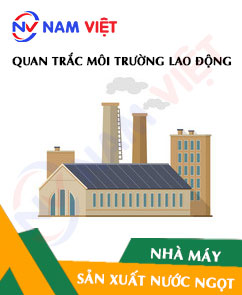
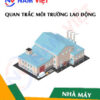
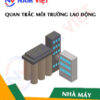
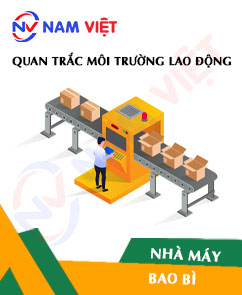

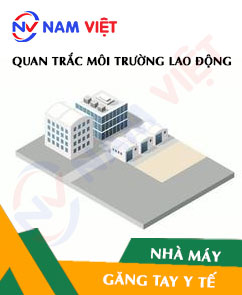

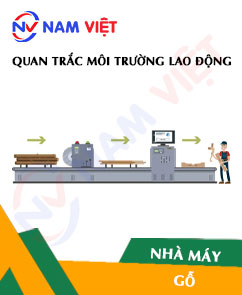
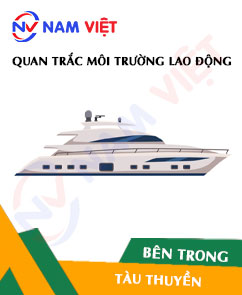


Review Occupational environment monitoring at the soft drink factory
There are no reviews yet.